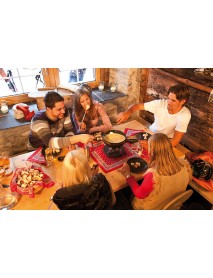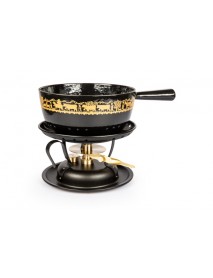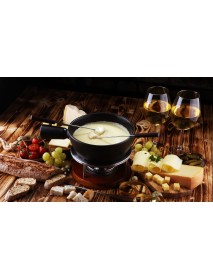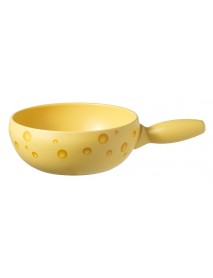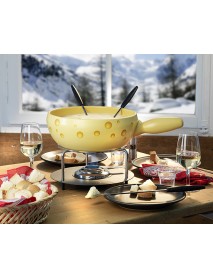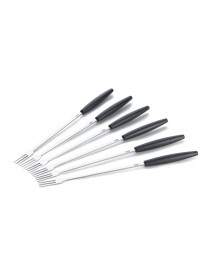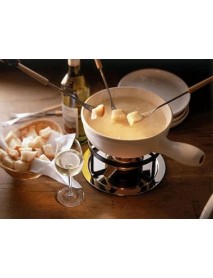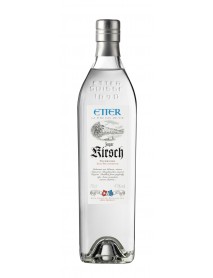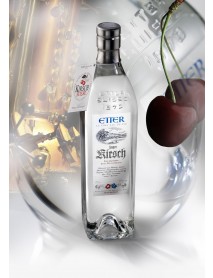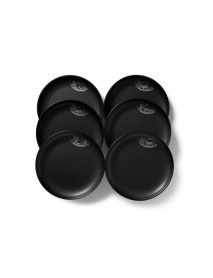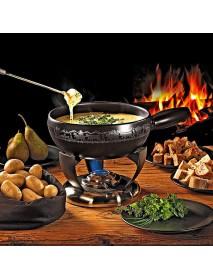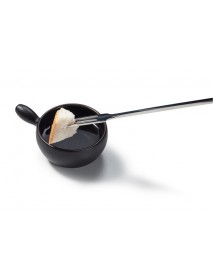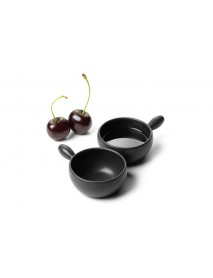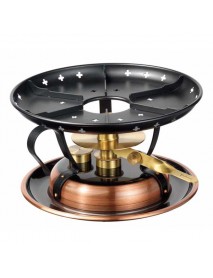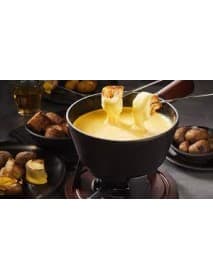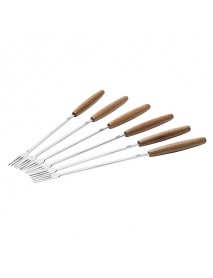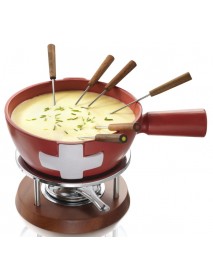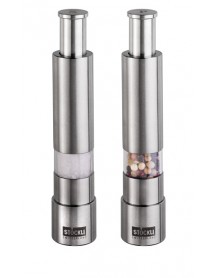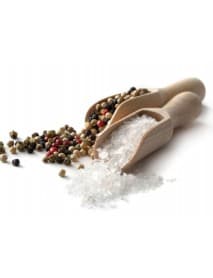Stöckli - Cheese Fondue Caquelon 'Alpaufzug' (21cm)
Product Description
Details
Stöckli - Cheese Fondue Caquelon "Alpaufzug" (Ascent to the Mountains)
Fondue pot made from fireproof, high-quality ceramics, covered with matte glaze, suitable for gas and electric stoves, with décor "Alpaufzug" Ascent to the Mountains.
Diameter: Ø 21 cm, max. persons 4
Fondue is a Swiss melted cheese dish served in a communal pot (caquelon or fondue pot) over a portable stove (réchaud) heated with a candle or spirit lamp, and eaten by dipping bread into the cheese using long-stemmed forks. The word fondue is derived from the French verb fondre ("to melt") used as a noun.
The earliest known recipe for the modern form of cheese fondue comes from a 1699 book published in Zurich, under the name "Käss mit Wein zu kochen", "to cook cheese with wine". The first known recipe for the modern cheese fondue under that name, with cheese and wine, was published in 1875. Despite its modern associations with rustic mountain life, it was a town-dweller's dish from the lowlands of western, French-speaking, Switzerland: rich cheese like Gruyère was a valuable export item which peasants could not afford to eat.
Cheese fondue consists of a blend of cheeses, wine and seasoning. To prepare, the caquelon it is first rubbed with a cut garlic clove. White wine is slightly heated with cornstarch, and then grated cheese is added and stirred until melted (if you use the fondue cheeses mixtures offered by Swiss House Shop from Art of Fondue, this is not required). It is often topped off with a bit of kirsch. The cornstarch or other starch stabilizes and thickens the mixture. Additional wine may be added if the fondue is too thick.
A cheese fondue mixture should be kept warm enough to keep the fondue smooth and liquid but not so hot that it burns. If this temperature is held until the fondue is finished there will be a thin crust of toasted (not burnt) cheese at the bottom of the caquelon. This is called 'la religieuse' (French for the nun). It has the texture of a cracker and is almost always lifted out and eaten.
In 1874, master Alfred Stöckli and his two assistants produce the first Stöckli products in a workshop in Uznach: paraffin lamps, burners, ash trays and metal pan lids. The small enterprise quickly develops into a flourishing company, now based in Netstal canton of Glarus. Many of Stöckli's creations have long become modern classics. Others have had a pioneering function and coined new product categories, for example our plastic drinks bottle case (1963) or our invention, the Raclette oven, which started a new trend (1971).
Additional Information
Additional Information
| Canton of Manufacture | Glarus |
|---|

